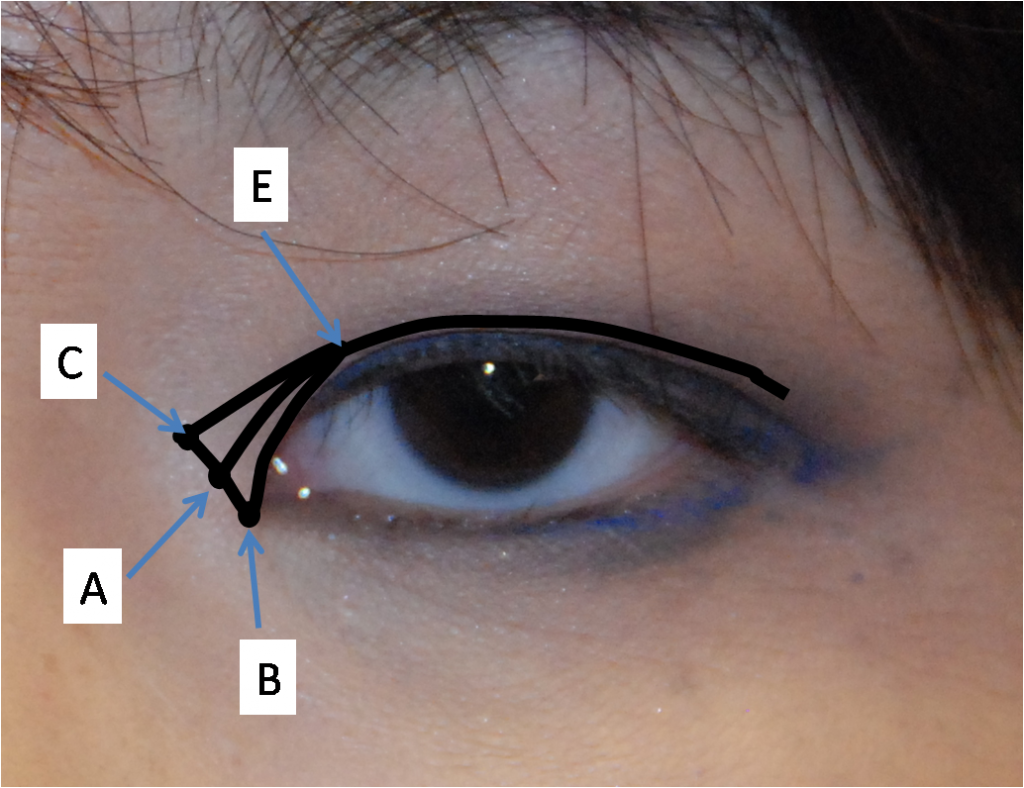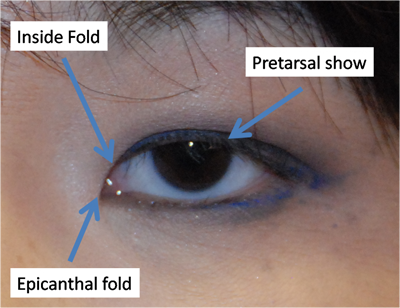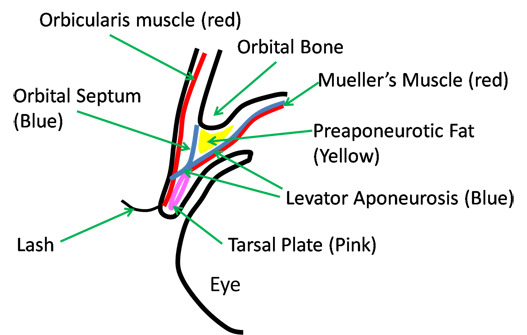Often times, when you do an Asian Eyelift (Aesthetic Facial Plastic Surgery in Bellevue, WA) you can create tension at the middle part of the eye where the epicanthal fold is located. When the crease is made higher than lower, the tension that the higher fold creates can place tension on the epicanthal fold and lead to what is commonly referred to as the round eye deformity. The appearance is an eye that looks round because it has increased its dimension in the superior and inferior direction but has remained the same in the horizontal dimension. In this case, an epicanthal fold can relieve this tension and create a more pleasing appearance to the eye by reshaping the epicanthal fold. There are four types of epicanthal folds. Type on is where there is no extra fold of skin that covers the fleshy part of the middle part of the eye called the lacrimal lake. When the epicanthal fold covers the top part of the fold and partially covers the lacrimal lake like the picture below a type 2 epicanthal fold exists. When the fold totally covers the fold a type 3 epicanthal fold is present. When the fold is reversed and is mainly originating from the lower eyelid, a type 4 epicanthal fold is diagnosed. Below shows a very common way to reshape the epicanthal fold. Point B is where the epicanthal fold transitions into the lower eyelid. Point A is the medial most point of the lacrimal lake. There is another point on the other side of the epicanthal fold that is called point D coinciding with the surface representation that is Point A. Point C is the extension of the marking from Point A that meets with the double eyelid crease markings that comes from Point E where the epicanthal fold meets the upper eyelid transition. Lines AB, BD, and AC are all equal. Simply put, the triangle EAC is excised and after cutting DBA, the flap DBA is moved to ECA used to be. The lines BD and AB are sutured together. Here is video on Asian Blepharoplasty and Medial epicanthoplasty.
Thanks for reading, Dr Young
Dr Young specializes in Facial Plastic and Reconstructive Surgery and is located in Bellevue near Seattle, Washington







